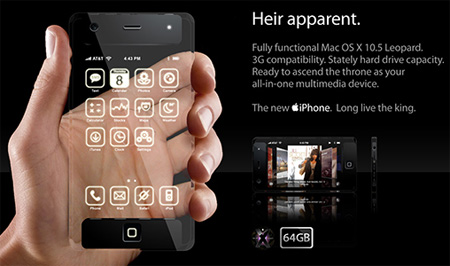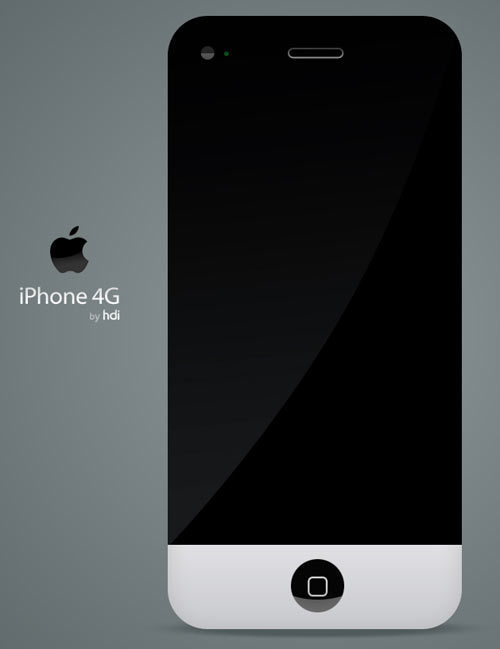Smartphones run mobile operating systems such as Google's Android, Apple's iOS,Microsoft's Windows Phone, Nokia's Symbian, RIM's BlackBerry OS, and embedded Linux distributions such as Maemo and MeeGo. Such systems can be installed on many different phone models, and typically each device can receive multiple OS software updates over its lifetime. Smartphones run third-party applications using advanced application programming interfaces (APIs), which can allow those applications to have better integration with the phone's OS and hardware than is typical with feature phones. In comparison, feature phones more commonly run on proprietary firmware, with third-party software support through platforms such as Java ME or BREW.
The Nokia Communicator line was the first of Nokia's smartphones starting with the Nokia 9000, released in 1996. This distinctive palmtop computer style smartphone was the result of a collaborative effort of an early successful and costly personal digital assistant (PDA) by Hewlett-Packard combined with Nokia's bestselling phone around that time, and early prototype models had the two devices fixed via a hinge. The Communicators are characterized by clamshell design, with a feature phone display, keyboard and user interface on top of the phone, and a physical QWERTY keyboard, high-resolution display of at least 640×200 pixels and PDA user interface under the door. The software was based on the GEOS V3.0 operating system, featuring email communication and text-based web browsing. In 1998, it was followed by Nokia 9110, and in 2000 by Nokia 9110i, with improved web browsing capability.
In 1997 the term 'smartphone' was used for the first time when Ericsson unveiled the concept phone GS88, the first device labelled as 'smartphone'.
In 2000, the touchscreen Ericsson R380 Smartphone was released. It was the first device to use an open operating system, the Symbian OS. It was the first device marketed as a 'smartphone'. It combined the functions of a mobile phone and a personal digital assistant (PDA). In December 1999 the magazine Popular Science appointed the Ericsson R380 Smartphone to one of the most important advances in science and technology. It was a groundbreaking device since it was as small and light as a normal mobile phone. In 2002 it was followed up by P800.
Also in 2000, the Nokia 9210 communicator was introduced, which was the first color screen model from the above Nokia Communicator line. It was a true smartphone with an open operating system, the Symbian OS. It was followed by the 9500 Communicator, which also was Nokia's first cameraphone and first Wi-Fi phone. The 9300 Communicator was the third dimensional shift into a smaller form factor, and the latest E90 Communicator includes GPS. The Nokia Communicator model is remarkable for also having been the most costly phone model sold by a major brand for almost the full life of the model series, costing easily 20% and sometimes 40% more than the next most expensive smartphone by any major producer.
In 2007 Nokia launched the Nokia N95 which integrated a wide range of multimedia features into a consumer-oriented smartphone: GPS, a 5 megapixel camera with autofocus and LED flash, 3G and Wi-Fi connectivity and TV-out. In the next few years these features would become standard on high-end smartphones. The Nokia 6110 Navigator is a Symbian based dedicated GPS phone introduced in June 2007.
In 2010 Nokia released the Nokia N8 smartphone with a stylus-free capacitive touchscreen, the first device to use the new Symbian^3 OS. It featured a 12 megapixel camera with Xenon flash capable of recording HD video in 720p, described by Mobile Burn as the best camera in a phone, and satellite navigation that Mobile Choice described as the best on any phone. It also featured a front-facing VGA camera for videoconferencing. Symbian was the number one smartphone platform by market share from 1996 until 2011 when it dropped to second place behind Google's Android OS. In February 2011 Nokia announced Symbian is to be replaced with Windows Phone as the operating system on all of their future smartphones. In the late 1990s the vast majority of mobile phones had only basic phone features and many people who needed functionality beyond that also carried PDA and/or pager type devices running early versions of operating systems such as Palm OS, BlackBerry OS or Windows CE/Pocket PC. Later versions of these systems started integrating cell phone capabilities with their PDA and messaging features and support of third-party applications. Today, high-end devices running these systems are often branded smartphones.
The Nokia Communicator line was the first of Nokia's smartphones starting with the Nokia 9000, released in 1996. This distinctive palmtop computer style smartphone was the result of a collaborative effort of an early successful and costly personal digital assistant (PDA) by Hewlett-Packard combined with Nokia's bestselling phone around that time, and early prototype models had the two devices fixed via a hinge. The Communicators are characterized by clamshell design, with a feature phone display, keyboard and user interface on top of the phone, and a physical QWERTY keyboard, high-resolution display of at least 640×200 pixels and PDA user interface under the door. The software was based on the GEOS V3.0 operating system, featuring email communication and text-based web browsing. In 1998, it was followed by Nokia 9110, and in 2000 by Nokia 9110i, with improved web browsing capability.
In 1997 the term 'smartphone' was used for the first time when Ericsson unveiled the concept phone GS88, the first device labelled as 'smartphone'.
 This iPhone 6 got get rid of |  iPhone 6 Concept Design |  iPhone concept designed by |  iphone 6 picture |  18 expected iphone 5 concept |
 These iPhone 5 concept designs |  Apple iPhone 6 rumored design |  The glossy iPhone 5 concept |  iPhone 6 concept design |  iPhone 5 Concept Design |
In 2007 Nokia launched the Nokia N95 which integrated a wide range of multimedia features into a consumer-oriented smartphone: GPS, a 5 megapixel camera with autofocus and LED flash, 3G and Wi-Fi connectivity and TV-out. In the next few years these features would become standard on high-end smartphones. The Nokia 6110 Navigator is a Symbian based dedicated GPS phone introduced in June 2007.
 iPhone concept designs. |  iPhone 5 Concept 2011 6 The |  Another iPhone 5 Design |  iPhone 6 concept |  We have seen iPhone 6 Concept |
 iPhone 6 Concept Design |  The iPhone Pro concept from |  iPhone Pro Concept Design 6 |  With New iPhone 6 Release Date |  iPhone 6 concept 250x166 image |
No comments:
Post a Comment